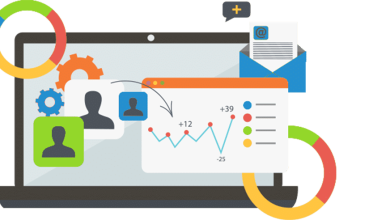Workforce Management with Digital Systems: Significance, Planning and Implementation

Digital transformation has become the key focus of enterprises because of the incredible advantages it can deliver. Workforce management is no exception and more and more organizations are choosing to manage their workforce digitally. The chief purpose of workforce management with digital systems is to offer the most productive and effective outcome by combining manual labor with the sequence of tasks digitally.
During the Covid outbreak, the way of work went through some revolutionary changes, and till now, with a hybrid workplace, managing the workforce involves many challenges. Now, in some companies, most of the employees work remotely, whereas in others very few are working from home. These out-of-ordinary situations gave rise to innovative strategies and technological solutions. Now, there are automated and robotic workforce management applications for managing staff. Every day new technologies are getting utilized for implementing and improving workforce management with digital systems.
The significance of workforce management with digital systems
The current scenario is driving the organizations to find workforce management tools and applications that will deliver more flexibility with personnel planning. Workforce management with digital systems can only grant them the desired flexibility and can make it faster and more efficient. Most organizations are in a hurry to develop a digital workforce management system to keep themselves ahead of the curve. The features they look for are digital attendance and staff time, leave management, automated staff scheduling, and roster management, real-time updates, reporting, and analytics. Workforce management practices have been changed. So, organizations have realized that to keep up with these changes and this new way of management, they have to adopt workforce management with digital systems.
There are lots of important reasons why workforce management with the digital system has become so significant.
- Ensuring the staff has more predictable and less stressful schedules.
- Optimal utilization of the skills and competencies of the workforce by placing them where they fit the best
- Managing paid time offs (PTO), break-time, and other time offs for remote and office workers efficiently.
- Constantly collecting and analyzing the data to improve the workforce management behavior and formulate more effective staff management strategies with analytics and reporting facilities.
- Obtaining valuable feedback, communicating with employees better, revising the policies, and changing the operational process according to them.
- Better staff scheduling with artificial intelligence and real-time alerts and updates about employee attendance and staff time.
Planning and Implementation of workforce management with digital systems
The workforce management with digital systems needs detailed planning and careful consideration. The current ecosystem of workforce management should be analyzed first. Review what are the organizational procedures and practices. The number and types of employees, their roles and functions, skill sets, time and availability, and more things should be taken into account, before implementing digital workforce management. Also, the legacy systems, platforms, and data transfer issues must be considered well.
One of the hardest parts of integrating a new system is the introduction, as employees are often reluctant to accept it and the changes. Going through digital changes the present workflow and employees sometimes may resist these changes. So, management leaders must mitigate the negative perceptions and warm them up to the new system. Any misconception must be addressed and advantages must be pointed out to manage their anxieties and improve their morale.
Here are some ways to implement digital workforce management to achieve better adoption.
Communicate well with your employees
Explain to them the reason behind the change and the benefits of employee management with digital systems. Involve them more in the decision-making process and make them aware of how it will affect them and their workflow. Send them emails, conduct polls to understand their feeling and opinion about it, and inform them how it will improve the current company processes and operations.
Establish a point of contact
Lots of employees need to learn the software and it will be difficult to address their questions and problems individually. But none of the employees should be ignored. So, assign someone whom your employees can approach regarding the new software easily. Once, they accustomed to the new system and find its advantages, they will use it on their own accord, and it will be easier to progress to the next step.
Execute training for all employees
Executing training before implementing employee management with digital systems is absolutely essential. Digital workforce management will change the daily operational practices of an employee. For example, it will change how they applied for leaves, log in and out, manage their shifts, etc. The new software will have tons of features and employees may feel overwhelmed at first. Also, many of them might not be as tech-savvy as others. So, a comprehensive training session for employees should be organized. It will help them to fully utilize the software and its functionalities.
Establish a feedback system
After implementation and use, employees may return with more queries and issues. So, it is essential to establish a feedback system for the employees. This feedback will help the organization to understand how well the new system is working. Also, it will help them identify opportunities for improvement and required changes, making the digital workforce system more effective and efficient.
Conclusion
Implementing a new system involves considerable challenges and risks. Workforce management with digital systems also has its own challenges. But it is impossible to manage today’s workforce without digital software. So before selecting and implementing an employee management software, consider the technological barrier, employee reluctance, data migration, and other important aspects very carefully. Choose a user-friendly, easy-to-set-up workforce management software that will satisfy the requirements and is ideal for your workforce practices.




